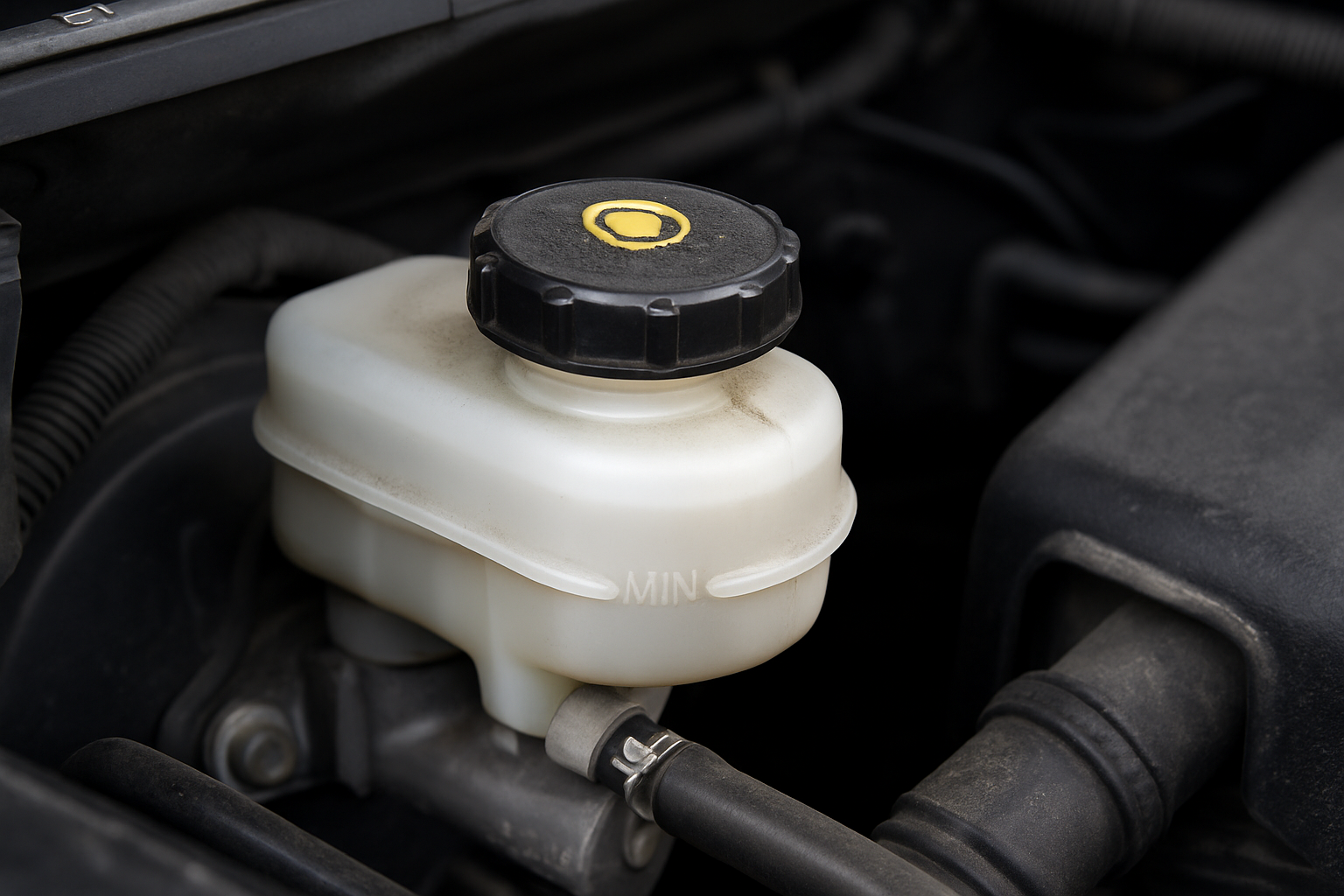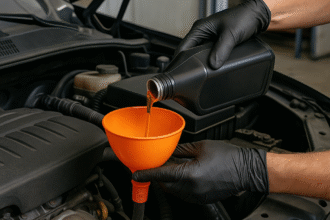Your brake system is one of the most critical safety components in your car. If you’re experiencing braking issues, one potential cause could be Signs of Low Brake Fluid In this post, we’ll help you identify the key signs of low brake fluid and guide you on what steps to take to ensure safe driving.
Why Brake Fluid Matters

Brake fluid transfers the pressure from your foot on the brake pedal to the brake pads, slowing your car. Without the proper fluid level, the brakes can’t function effectively — putting you and others at risk.
Learn more about brake fluid basics from NAPA Auto Parts
Common Signs of Low Brake Fluid
1. Soft or Spongy Brake Pedal
If the pedal feels soft, spongy, or needs to be pushed further than normal, your brake fluid might be low or there may be air in the brake lines.
2. Brake Warning Light Is On
Most modern cars have a brake warning light on the dashboard that turns on when fluid levels drop below the minimum threshold.
3. Longer Stopping Distances
Low fluid reduces hydraulic pressure, making it take longer to bring your vehicle to a full stop.
4. Grinding or Squealing Sounds
While this could also point to worn brake pads, it can be related to low fluid if the brake system isn’t functioning properly.
5. Visible Fluid Leaks Under the Car
Brake fluid is usually clear to yellowish and oily. If you see it pooling near your wheels, you likely have a leak and low brake fluid.
What to Do If You Suspect Low Brake Fluid
Step 1: Check the Brake Fluid Reservoir
Locate the brake master cylinder reservoir under your hood. Make sure your car is parked on level ground and the engine is off. Fluid should be between the “MIN” and “MAX” lines.
Step 2: Top Off the Brake Fluid (If Needed)
If the fluid is low, only top it off with the type recommended in your vehicle owner’s manual (e.g., DOT 3, DOT 4). Don’t mix types.
Step 3: Inspect for Leaks
Check hoses, lines, calipers, and around the master cylinder for visible signs of leakage.
Step 4: Bleed the Brakes (Optional)
If air has entered the brake lines, bleeding may be necessary to restore brake responsiveness. This can often be done with a brake bleeding kit.
Step 5: Get a Professional Inspection
If you’re unsure or continue having issues, take your car to a certified mechanic immediately.
Safety Warning
Never ignore signs of brake failure. Driving with low brake fluid or brake issues can lead to serious accidents. Always address the issue promptly.
FAQs – Signs of Low Brake Fluid
Q: How often should I check brake fluid?
A: At least once every 6 months, or during routine oil changes.
Q: Can I drive with low brake fluid?
A: It’s not recommended. Driving with low brake fluid is dangerous and may lead to brake failure.
Q: What color is brake fluid when it leaks?
A: Fresh brake fluid is clear or light yellow. Over time, it can darken to brown.
Conclusion
Understanding the signs of low brake fluid can help you prevent brake failure before it becomes dangerous. Always inspect your fluid levels and seek help if needed. Your car — and your life — depends on it.






